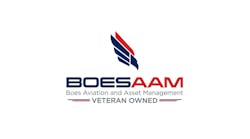WASHINGTON – On Nov. 20, the U.S. Federal Aviation Administration (FAA) and the European Aviation Safety Agency (EASA) announced a joint strategy for implementing the most-recent update to the international safety agreement between the two bodies. That document, which was signed in September and was scheduled to become effective on Dec. 8, included a major complication regarding documentation requirements for new aircraft parts that will be installed in articles subject to the jurisdiction of both the European Union (EU) and the United States.
Change 5 to the Maintenance Annex Guidance (MAG) issued under the U.S.-EU Bilateral Aviation Safety Agreement (BASA) created a clear requirement for a specific FAA Form – the 8130-3 – to be issued by production approval holders (PAH). The form must accompany all new parts to be installed on articles for which a dual FAA-EASA maintenance release will be issued. A BASA is a government-to-government agreement meant to simplify regulatory oversight across borders. However, under current FAA rules only the agency or its designees can issue the document for a new part.
The FAA addressed that problem in a final rule published Oct. 1 that will allow U.S. PAHs to issue Form 8130-3 without needing an FAA designee. Unfortunately, aerospace manufacturers cannot implement the new privilege until the final rule’s March 29, 2016 effective date, with longer timelines required for FAA regulatory review and approval.
On Oct. 7, a coalition of aviation trade associations sent a letter to both agencies offering a solution: delay implementation of the MAG’s new documentation requirements until the effective date of FAA’s new rule. U.S. aviation businesses would then be able to install these parts on European articles, and remain in compliance, without disruption.
“Even though the U.S. and EU regulatory systems are equivalent, our members’ hands were effectively tied,” said Marshall S. Filler, managing director and general counsel for ARSA, about the industry-wide effort. “As things stood in October, in order to serve European customers many U.S. repair stations would be legally obligated to possess parts documentation that U.S. manufacturers cannot issue.”
In response the agencies agreed to delay implementation of the FAA Form 8130-3 requirement until April 1, 2016. The FAA issued a notice, effective Nov. 17, providing additional time for U.S. PAHs to update their internal procedures and issue the forms for parts released from their quality systems. They also clarified the requirement would not be applied retroactively to parts released by the PAH prior to the new effective date, whether in a repair station’s inventory or in the distribution pipeline.
“After the FAA’s new rule was published [on Oct. 1], the way ahead was pretty clear,” Filler concluded. “Giving U.S. industry the time it needed to align systems and procedures with the new MAG requirement was the simple, common sense solution. The agencies saw that, with a little help, and made the right decision. Fortunately, the aviation community will not be penalized because of an unworkable regulatory burden.”
For more information about the change to the MAG, please visit ARSA.org/mag-change-5.
ARSA is the only association devoted to the unique needs of the global civil aviation maintenance industry. It is dedicated to helping member companies operate more efficiently and effectively, while continuing to ensure the safety of aircraft worldwide. To learn more about the association’s dedicated work on behalf of both industry stakeholders and the flying public, please visit ARSA.org.




